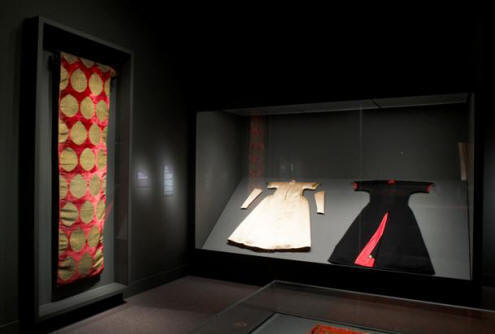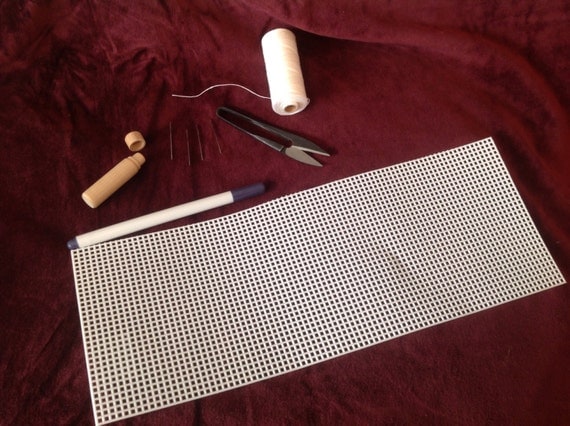A post in between HSM challenge posts... say it isn't so. As usual, I am working on a variety of things and we have been going to SCA events nearly every weekend, so there is never enough time to do even a fraction of what's on my project list, much less blog about it.
But I have finished (finally!) an entari I am reasonably satisfied with, so I have something to wear besides my rust Italian gown. *happy dance*
I actually started this project back in late January, thinking that I'd knock out a fast new entari and wear Ottoman for Midwinter A&S. *cue ominous music*
But I have finished (finally!) an entari I am reasonably satisfied with, so I have something to wear besides my rust Italian gown. *happy dance*
My entari
extant late 16th c. entari of a similar style from www.turkishculture.org
Illustration that inspired the colors (which upon further reflection looking at the hat, is actually probably post 1600)
from Recueil de costumes turcs et de fleurs Bibliotheque Nationale de France www.gallica.bnf.fr
I had some merlot colored cotton with a lovely hand to it in the stash and I got the pattern cut out and started construction easily enough. Then I got to attaching the front and back at the shoulder. I could split the front up the middle and move on with construction. That would have been the sane and responsible thing to do.
But I had a pile of 9 finger-looped black braids that had not worked out as points for Pietro's hose. The braids fell onto the fabric and now I had a vision of black çaprast down the front of the entari.
I was lost. I couldn't not add the çaprast now. After all... I wasn't doing anything else with the braids. And of course, once I got started the 9 braids weren't nearly enough, so there was more finger-loop braiding and much hand stitching of trim (and then taking off and resewing of trim in other positions once I tried it on).
I started out with the front flat on my cutting table marking lines where I planned the çaprast and starting to stitch the trim while it was on the table. But as the projected dragged out after Midwinter, I needed the cutting table and I ended up wrapping the front around a macrame board and pinning the excess on the back like a dress shirt in its package.
That actually turned out to be an inadvertent, but brilliant idea. It made stitching the trim go much faster since I could turn the board as needed rather than try and stretch myself over the cutting table.
But I had a pile of 9 finger-looped black braids that had not worked out as points for Pietro's hose. The braids fell onto the fabric and now I had a vision of black çaprast down the front of the entari.
I was lost. I couldn't not add the çaprast now. After all... I wasn't doing anything else with the braids. And of course, once I got started the 9 braids weren't nearly enough, so there was more finger-loop braiding and much hand stitching of trim (and then taking off and resewing of trim in other positions once I tried it on).
I started out with the front flat on my cutting table marking lines where I planned the çaprast and starting to stitch the trim while it was on the table. But as the projected dragged out after Midwinter, I needed the cutting table and I ended up wrapping the front around a macrame board and pinning the excess on the back like a dress shirt in its package.
That actually turned out to be an inadvertent, but brilliant idea. It made stitching the trim go much faster since I could turn the board as needed rather than try and stretch myself over the cutting table.
çaprast in progress on the macrame board
Once the çaprast were on, the rest of the garment went together without much incident. The fabric was generally well behaved, the lining didn't sag in odd spots and the facings didn't pull or buckle peculiarly.
Typically 16th c. Ottoman women wore more than one entari over their gomlek (the Ottoman equivalent of a camicia) so I reused the Caterpillar entari to wear underneath and made a pair of long sleeves for the previously short sleeved garment. One of the many reasons that I am enchanted with 16th c. Ottoman is the detachable sleeves. It expands the mix and match options of a limited garb wardrobe exponentially.
extant late 16th c. entari with detachable sleeves from www.turkishculture.org
I got this done for Coronation... only a month and a half after my original goal and I've worn this outfit to several outdoor events (90% of SCA events in Meridies are mostly or entirely outdoors) It is amazingly practical. I still have the swish of skirt around my ankles, but I don't trip over my hem or drag it in the mud, I can take off the sleeves if it gets warm in the afternoon and if I'd doing something like loading/unloading the car, I can tuck the front hems in my belt and it's not only practical, it's actually historically accurate!
illustration from Codex Vindobonensis 8626 c. 1590 at the Austrian National Library
In other news, Jay has finished his first blackwork project: a collar and cuffs and I am making a shirt using them and I am also still in the midst of my drawnwork obsession so there is much going on... watch this space!
















































